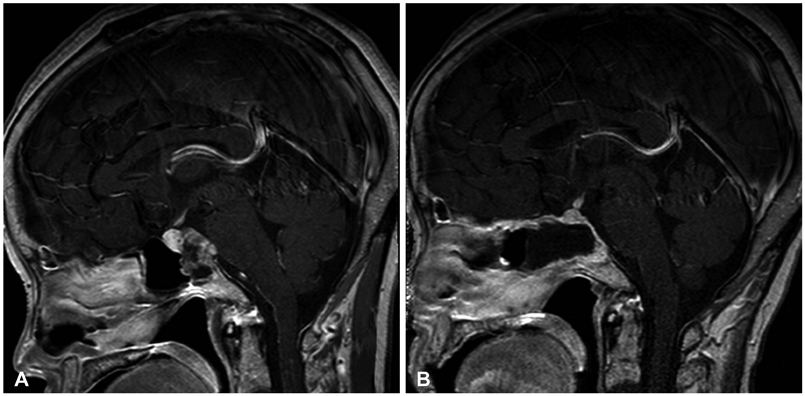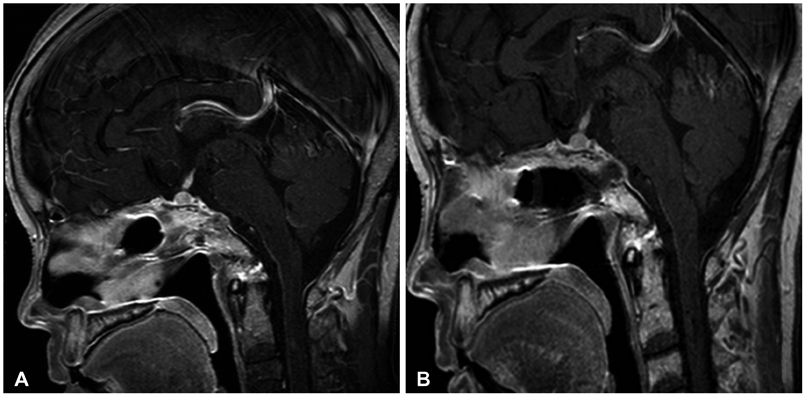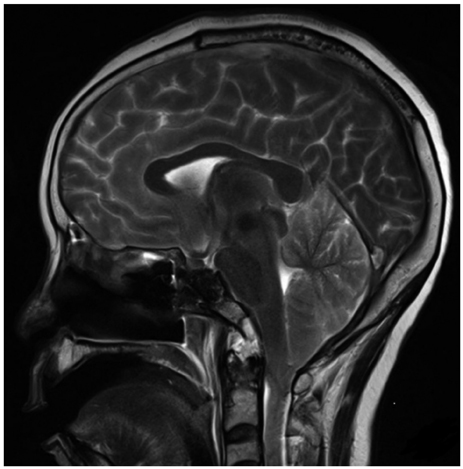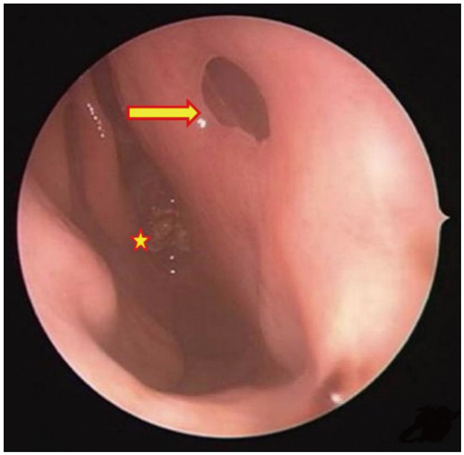Brain Tumor Res Treat.
2013 Oct;1(2):107-110. 10.14791/btrt.2013.1.2.107.
Fulminant Meningitis after Radiotherapy for Clival Chordoma
- Affiliations
-
- 1Department of Neurosurgery, Eulji University Hospital, College of Medicine, Eulji University, Daejeon, Korea. nsksm@eulji.ac.kr
- KMID: 2048485
- DOI: http://doi.org/10.14791/btrt.2013.1.2.107
Abstract
- The best treatment for clival chordoma is obtained with total surgical excision, sometimes combined with adjuvant radiotherapy. A cerebrospinal fluid (CSF) fistula is a fatal complication that may occur following extended transsphenoidal surgery (TSS) and adjuvant radiotherapy. We report a case of fulminant meningitis without a CSF fistula in a 57-year-old woman who underwent TSS and multiple radiotherapies for a clival chordoma. She presented to our emergency room with copious epistaxis and odor inside her nasal cavity and had an unexpected fatal outcome. She was diagnosed with meningitis based on CSF culture and blood culture. While treating clival chordomas with adjuvant radiotherapy, clinicians should be aware of the possibility of fulminant meningitis.
Keyword
MeSH Terms
Figure
Reference
-
1. Walcott BP, Nahed BV, Mohyeldin A, Coumans JV, Kahle KT, Ferreira MJ. Chordoma: current concepts, management, and future directions. Lancet Oncol. 2012; 13:e69–e76.
Article2. St Martin M, Levine SC. Chordomas of the skull base: manifestations and management. Curr Opin Otolaryngol Head Neck Surg. 2003; 11:324–327.
Article3. Kono Y, Prevedello DM, Snyderman CH, et al. One thousand endoscopic skull base surgical procedures demystifying the infection potential: incidence and description of postoperative meningitis and brain abscesses. Infect Control Hosp Epidemiol. 2011; 32:77–83.
Article4. Hongmei Y, Zhe W, Jing W, Daokui W, Peicheng C, Yongjie L. Delayed cerebrospinal fluid rhinorrhea after gamma knife surgery in a patient with a growth hormone-secreting adenoma. J Clin Neurosci. 2012; 19:900–902.
Article5. Kim CH, Chung SK, Dhong HJ, Lee JI. Cerebrospinal fluid leakage after gamma knife radiosurgery for skull base metastasis from renal cell carcinoma: a case report. Laryngoscope. 2008; 118:1925–1927.
Article6. Ciric I, Ragin A, Baumgartner C, Pierce D. Complications of transsphenoidal surgery: results of a national survey, review of the literature, and personal experience. Neurosurgery. 1997; 40:225–236. discussion 236-7.
Article7. Siedek V, Pilzweger E, Betz C, Berghaus A, Leunig A. Complications in endonasal sinus surgery: a 5-year retrospective study of 2,596 patients. Eur Arch Otorhinolaryngol. 2013; 270:141–148.
Article8. Dormand EL, Banwell PE, Goodacre TE. Radiotherapy and wound healing. Int Wound J. 2005; 2:112–127.
Article9. al-Mefty O, Kersh JE, Routh A, Smith RR. The long-term side effects of radiation therapy for benign brain tumors in adults. J Neurosurg. 1990; 73:502–512.
Article10. Sen C, Triana AI, Berglind N, Godbold J, Shrivastava RK. Clival chordomas: clinical management, results, and complications in 71 patients. J Neurosurg. 2010; 113:1059–1071.
Article





